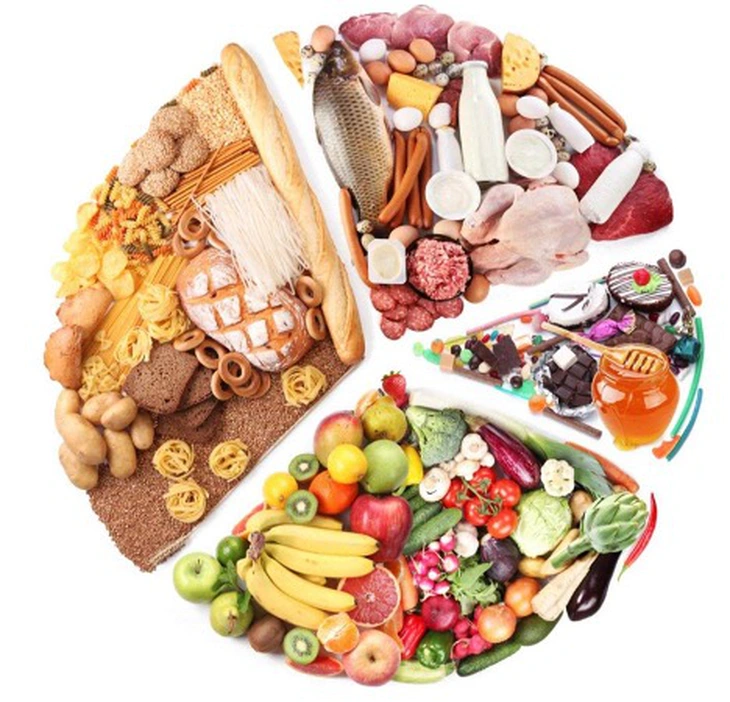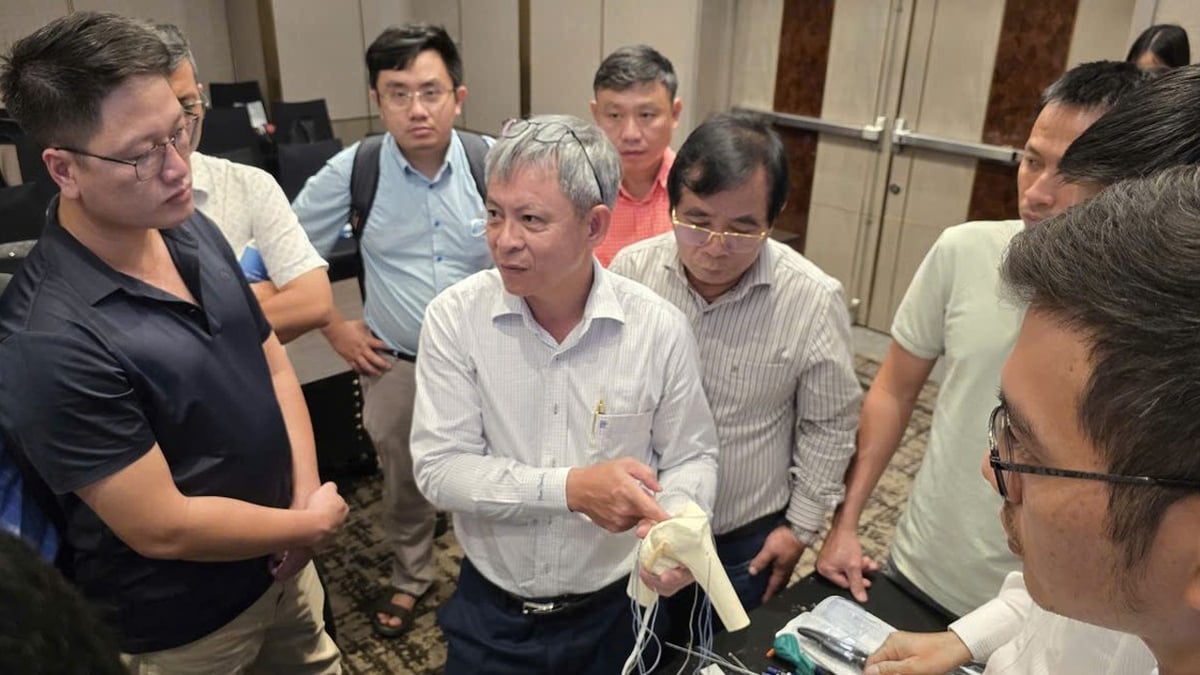
Experts recommend many nutritional groups that are good for blood production - Photo: BVCC
According to Dr. Le Thi Thanh Vui, an expert from the Center for Hematology and Blood Transfusion at Bach Mai Hospital, the process of blood formation, also known as hematopoiesis, is a miraculous biological activity that takes place continuously in the bone marrow.
To produce quality and sufficient quantity of blood cells, the body needs a diverse and adequate supply of micronutrients.
Deficiency of any element can lead to blood disorders, the most common of which is anemia, which seriously affects health and quality of life. However, not everyone knows which nutrients play a key role.
Iron
According to this expert, iron is a core component of hemoglobin - a protein in red blood cells that is responsible for transporting oxygen from the lungs to tissues and carrying carbon dioxide from tissues back to the lungs for excretion.
Iron deficiency leads to iron deficiency anemia, which causes symptoms such as fatigue, pale skin, pale mucous membranes, shortness of breath on exertion, rapid heartbeat, dizziness, decreased ability to concentrate, and increased risk of infection.
Sources can come from a variety of foods. Heme iron (easily absorbed) is found in red meat (beef, veal, lamb), animal liver (pork liver, chicken liver), heart, kidney, poultry (chicken, duck, especially dark meat), fish (tuna, mackerel, salmon) and shellfish (clams, oysters, mussels, clams).
Non-Heme Iron (requires support for absorption) is found in dark green leafy vegetables (spinach, kale, broccoli, spinach, amaranth), legumes (lentils, chickpeas, black beans, soybeans and soy products such as tofu), nuts (pumpkin seeds, cashews, sunflower seeds), whole grains and iron-fortified products (wheat flour, breakfast cereals).
Vitamin B12 (Cobalamin)
Vitamin B12 plays an essential role in DNA synthesis, which is required for the division and maturation of red blood cells in the bone marrow. It is also important for maintaining normal nervous system function, including the formation of the myelin sheath that protects nerve fibers.
Vitamin B12 deficiency can cause megaloblastic anemia with symptoms similar to iron deficiency anemia but often accompanied by neurological problems such as numbness in the limbs, loss of balance, memory loss and even irreversible nerve damage if not treated promptly.
Sources: Vitamin B12 is mainly found in animal products such as meat (especially liver and kidney); fish and seafood (salmon, tuna, sardines, clams, oysters); eggs (especially yolks); milk and dairy products (cheese, yogurt).
Folic Acid (Vitamin B9)
Similar to vitamin B12, folic acid is important for DNA and RNA synthesis, which in turn is required for cell division and replication, including blood cells in the bone marrow.
Folic acid deficiency also causes megaloblastic anemia, similar to vitamin B12 deficiency but without the neurological damage. Folic acid is especially important for pregnant women to prevent neural tube defects in the fetus.
Sources include dark green leafy vegetables (spinach, kale, asparagus, broccoli); legumes (lentils, chickpeas, black beans); fruits (oranges, avocados, bananas); animal liver; whole grains and products fortified with folic acid (bread, breakfast cereals).
Dr. Vui said that the need for folic acid increases in pregnant and lactating women. Supplementing folic acid as prescribed by a doctor before and during pregnancy is extremely important to ensure healthy fetal development.
Other important nutrients
Besides iron, vitamin B12 and folic acid, a number of other vitamins and minerals also contribute significantly to maintaining a healthy blood system:
Vitamin C: As mentioned, vitamin C not only enhances iron absorption but is also a powerful antioxidant, protecting blood cells from damage. Vitamin C is found in citrus fruits, strawberries, kiwi, bell peppers, and broccoli.
Vitamin B6 (Pyridoxine): Participates in the synthesis of heme, a component of hemoglobin. Vitamin B6 is found in chicken, fish, potatoes, bananas, and beans.
Copper: Necessary for iron metabolism and hemoglobin formation. Copper is found in liver, oysters, nuts, dark chocolate.
Vitamin A : Important for the growth and differentiation of hematopoietic stem cells in the bone marrow. Vitamin A is found in liver, fish oil, eggs, milk, orange-yellow vegetables (carrots, sweet potatoes, pumpkins) and dark green leafy vegetables (containing beta-carotene, a precursor of vitamin A).
Vitamin E: An antioxidant that helps protect red blood cell membranes found in vegetable oils, nuts, and avocados.
Protein: Is a component of hemoglobin and other proteins in plasma found in meat, fish, eggs, milk, beans, and seeds.
Source: https://tuoitre.vn/an-gi-de-ngan-ngua-thieu-mau-20250714120813533.htm


































































































Comment (0)